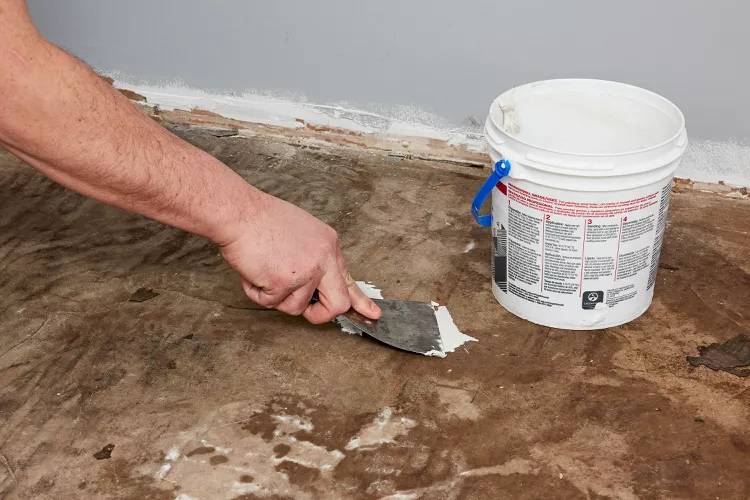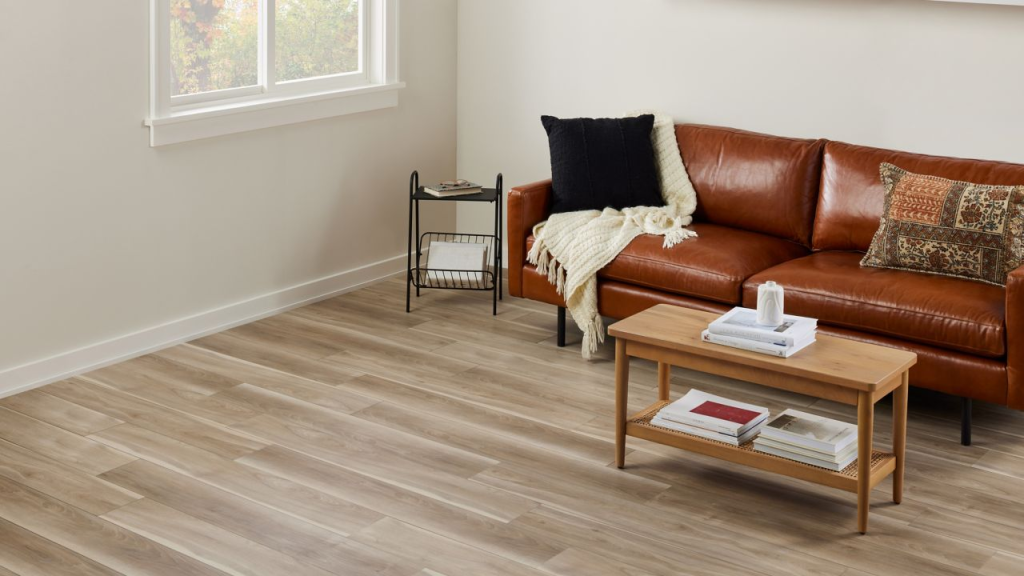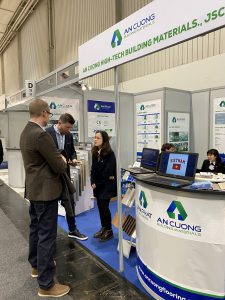Installing luxury vinyl tile (LVT) flooring is not just about choosing your favorite design and starting the installation. To achieve a perfect result, many factors need to be carefully considered before, during, and after the installation process. Follow An Cường Flooring to learn about the important points to ensure your LVT flooring is not only beautiful but also durable over time in the article below.

Subfloor Identification
Before installing LVT, understanding the type of subfloor is crucial. Common subfloor types such as concrete, cement/sand screed, ceramic tiles, and wood all need to be properly prepared. In some cases, the subfloor may need to be completely removed to avoid damage. Additionally, it is important to check if the house has a functioning damp-proof membrane (DPM) to control moisture and prevent it from affecting the LVT finish.
Moisture Testing
Moisture is the main cause of 90% of flooring failures. Therefore, moisture testing before installation is a step that cannot be skipped. If the subfloor does not have a DPM or the DPM is damaged, moisture can affect the lifespan of the flooring. A moisture level below 75% RH indicates that the subfloor is dry and ready for the next steps. If the moisture level is above 75% RH, a moisture suppressant or DPM should be used to protect the flooring.
Condition of the Subfloor
The subfloor must be solid, clean, stable, and free of cracks. In some cases, adhesive barriers need to be ground off or repair products used to fill holes. This ensures a solid foundation for the LVT.

Movement Joints
In commercial buildings, handling movement joints is very important. You can integrate these joints into the floor covering by using expansion strips. This should be done before applying the leveling and smoothing compound to ensure the highest quality finish.
Leveling and Smoothing Compounds
Before installing LVT, ensuring the subfloor reaches the ideal height and flatness is crucial. Choosing the right leveling and smoothing compound will help the surface meet the UK’s SR1 standard, providing a perfect finish for the floor. Additionally, you should consider using an appropriate underlay to enhance the durability and stability of the subfloor.

Adhesive selection and installation
Adhesive is a key factor determining the durability and performance of LVT flooring. Following the manufacturer’s recommendations for adhesive selection is essential to ensure installation quality. Make sure to use the correct trowel to apply the adhesive and optimize the contact between the LVT and adhesive by using a heavy roller. This will help create a strong and durable bond for your flooring.
Guidelines, datasheets and standards
Adhering to the data sheets and advice from both the adhesive and LVT manufacturers throughout the installation process is best practice. This ensures the long-term performance of the installation and customer satisfaction.

Summary
Achieving a perfect LVT installation requires knowledge and professional skills. From preparing the subfloor to the final finish, each step demands meticulousness and precision. Handling challenges such as moisture, subfloor stability, and proper LVT adjustment will ensure your flooring is not only aesthetically pleasing but also durable over time. By following best practices, you can be confident that your LVT flooring will always be perfect and meet all usage requirements.









